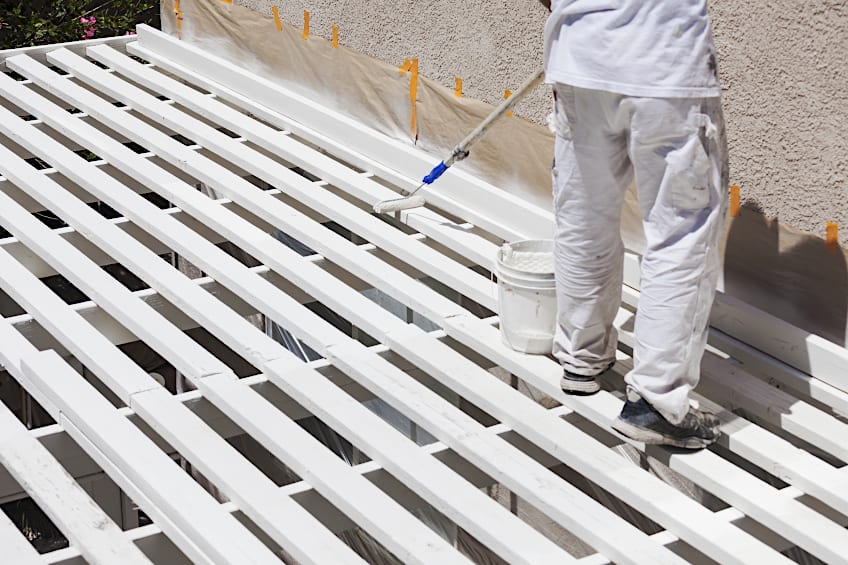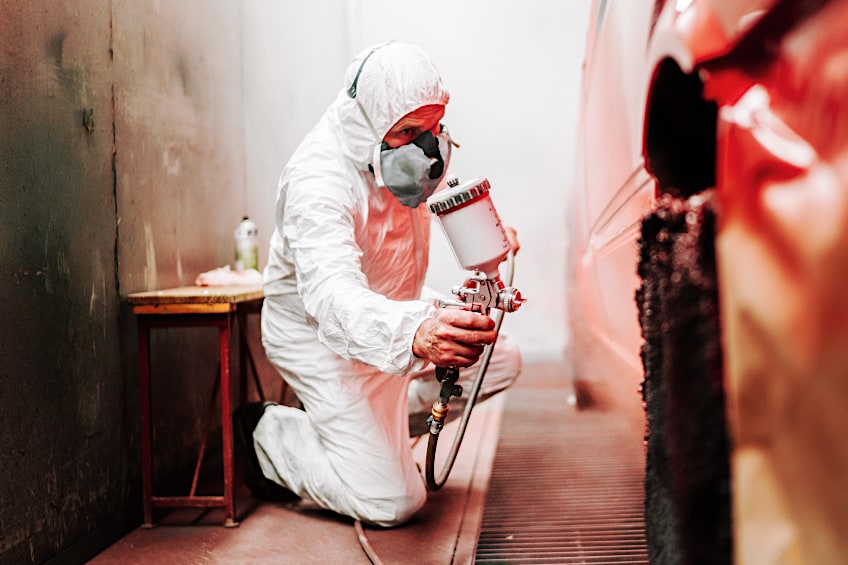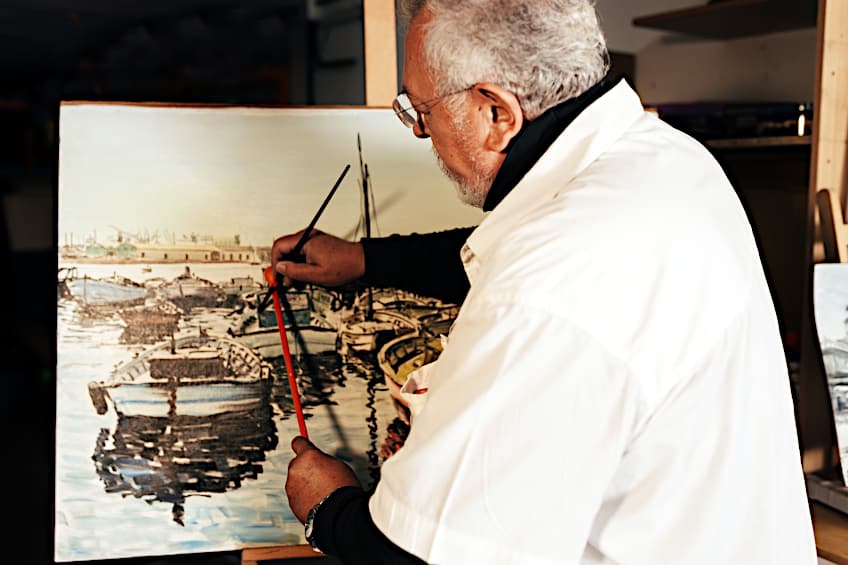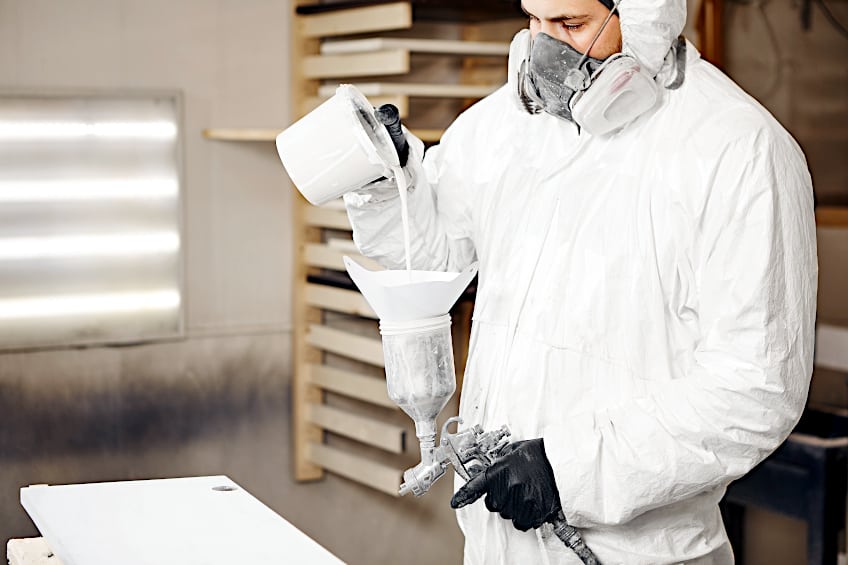Why Do Painters Wear White? – Unveiling the White Mystery
This post may contain affiliate links. We may earn a small commission from purchases made through them, at no additional cost to you. You help to support resin-expert.com
We have a lot of little quirks as people. We have the ability to assign meaning to essentially anything, and something that we have assigned meaning to for thousands of years is color. Color can mean many different things to many different people, and it’s often the simplest colors that mean the most to people. For example, painters have worn white for a really long time, but have you ever asked why? We thought we’d have a look into this long-carried tradition and explore some of the reasons why painters wear this neutral but easily identifiable color while on the job.
Table of Contents
Why Do Painters Wear White?
Depending on the occupation, people tend to wear different colors to indicate their role and/or rank. In occupations where physical hazards are plentiful, people often wear high-visibility vests and hard hats, and in corporate environments, people commonly wear white shirts and ties. That being said, white has become the go-to for professional painters over the years. The reason for painters wearing white is plentiful, and the color has become synonymous with earnest professionals painting walls on scaffolding and ladders all over the world.
Why white though? Well, aside from the fact that it makes painters easily identifiable, it also has a range of practical applications specific to painting.
You could think of painters wearing white as the equivalent of engineers and professional woodworkers wearing overalls when they work. It’s the uniform of the trade and has become somewhat iconic in most countries in the same way that blue overalls have become synonymous with farming and other hands-on occupations. That being said, let’s have a look at some of the reasons that painters wear white including environmental factors, practical factors, as well as cultural and historical reasons that painters have chosen this rather plain color as the mark of their occupation. Keep in mind that while it’s commonly accepted that professional painters wear white, not all of them do.
Functional Reasons That Painters Wear White
While you might think that painters wearing white are simply a bold fashion choice, there are various practical reasons why painters wear white, much in the same way that hunters and soldiers wear camouflage.
Let’s have a look at some of the practical and environmental factors that painters have chosen to wear white over any other color.
It Deflects Heat
Why do painters wear white? When it comes to physical labor there are many factors that one needs to take into account. One is temperature, especially if you are going to be spending your time on an elevated platform outdoors. This is one of the many practical reasons that painters wear white, as it effectively dissipates the effects of heat and direct sunlight on the wearer. Whereas darker colors tend to hide stains better, painters are often involved in physically strenuous activities that leave them sweating. White helps keep things cool, and when fashioned into the right type of garment, allows for adequate airflow ensuring that even when spending long hours painting the exterior of a home, painters remain nice and cool.
It Makes It Easier to See Colors Being Mixed
When it comes to colors being mixed, you wouldn’t be able to do much if you didn’t have a base, and the base for pretty much any hue is white. What does this have to do with painters wearing white you ask? Well, essentially white served as a way to camouflage the dust that is produced during the blending process, which can be a lot. What do we mean? When creating a paint color, a white base is used as the foundation. Back in the day, a lead-based white base would be used before any color was added to the paint, a process that would kick up a lot of dust.
Since the color of the base is white and the painter’s coats were white, it nicely hid any dust that would stick to their clothing!
It Does Not Show Paint Splatters and Stains
One of the reasons that white is the perfect color for professional painters is that it is practically impossible to hide splatter and stains when wearing it, even if you’re painting with white paint! It is easy to identify if white clothing has been stained with paint, which is why many professional painters choose to wear white over any other color. How does this benefit the painters though? Well, if the paint is wet and their clothing touches it, it’s white and easy to see what area of the work surface is still wet based on what part of your clothing came into contact with it. Pretty neat trick, right? We think this might be more of an unintended advantage, but it’s become a welcomed advantage to wearing white while painting.
Cultural and Historic Reasons That Painters Wear White
While white has many functional benefits within the trade of painting, there are also many cultural and historical reasons why many painters still wear white today. In some parts of the world painting is a legacy trade that is passed on through generations.
So it only makes sense that the tradition of wearing white would continue through the ages based on culture and history.
It Symbolises Purity and Professionalism
Professional painting is as much an art as it is an occupation, and many painters take great pride in their work. That being said, at one point in history the painter’s union mandated that all painters belonging to said union wear white when working to create a sense of uniformity and to make them easily identifiable from those who were not part of the union. White has also historically been a symbol of purity. The most common example of this is how traditionally catholic brides would wear a white wedding dress to symbolize their “purity” during their wedding, which was seen as a union before God. Painters similarly wore white to indicate the dedication and purity of their craftsmanship.
It Used to Be Seen as a Color of the Upper Class
Another reason that painters wore white back in the day is because it was seen as a color of the upper class. If you’ve ever seen an old movie with characters wearing ivory white suits, then you know what we’re talking about. Were painters seen as members of the upper class then? Well, sort of. White was a way of distinguishing painting from other trades. How did this work? Well, we mentioned previously that in trades like engineering and mechanics, workers tend to wear blue overalls, which used to indicate you did rather messy, grueling work.
Painters saw their occupation as being a more refined, less messy trade, and therefore distinguished themselves from other tradesmen through their white work uniform.
White Is Associated With the Impressionist Movement and French Artists
Whether you’re painting fine art or a living room wall, you are still a painter and artist by trade. White has always been a part of the image of the artist in one form or another, and another possible reason that painters wear white clothing is that many impressionist painters from Europe would wear white while working. This seems to have trickled down through the ages, and while the application of the paint may have changed, the skill and passion involved most certainly have not. As we mentioned previously, the color white is associated with cleanliness, class, refinement, and purity, which all likely contributed to its popularity at the time.
White Told the Story of the Painter
There are two ways you could look at this statement. Back in the day, if you had white overalls it might give you the upper hand in getting a job when compared to someone who showed up in some paint-covered overalls. After all, white clothing used to be costly, so someone with clean white overalls would be assumed to have incredible skill. These days things are different. white clothing won’t cost you an arm and a leg, and painters tend to walk around in their stained white coveralls with pride (as they should).
Generally, you’ll only see newcomers to the trade in untainted white coveralls these days.
Other Professions That Wear White
While painters are known for wearing white while they work, they do not have a monopoly on the concept. As you can see, white has many inherent benefits that those in other occupations have also noted, and have therefore made it part of their uniform as well. That being said, let’s have a look at which other professions wear white while they work.
Professional Chefs
A profession that is usually depicted as wearing white in modern media is the professional chef. It’s not just the chefs either, in many high-end restaurants, all manner of the kitchen staff are kitted out in clad white, clearly distinguishing them from waiting staff and patrons of the establishment. Why do chefs wear white though? Well, traditionally chefs simply wore white, and aside from the aesthetics, white keeps one’s body cool, which is needed in the heat of the kitchen. White also used to play a part in signifying the abilities of the chef. If a chef’s sleeves are clean and they have a dirty apron, it is considered to be the mark of a good chef!
Doctors and Nurses
Doctors are famously known for their white lab coats. Why do doctors wear white though? Well, for pretty much the same reasons that painters tend to wear white. This is to indicate that they are a medical professional, and it functions as a professional work uniform in a medical environment. It is easy to identify stains and spills on a white coat, making a clean coat a symbol of cleanliness. White is also meant to communicate sterility in a medical environment while allowing those working in said environment to easily identify things like medicines or bodily fluids that could have spilled while working with them.
Some doctors also do a lot of walking, so much the same as it is with chefs and painters, it helps to keep them cool.
Cleanroom Workers
Another profession known for its use of white lab coats is the applied sciences. Scientists in white lab coats have become something of a staple in modern media, and there’s a reason that they’re always seen working in these garments. Much like doctors, the coat is meant to symbolize cleanliness and sterility in an environmental contamination that could mean the difference between life and death. Scientists who work in clean room environments take things a step further. Instead of a simple white coat, those who work in clean rooms wear head-to-toe hazmat suits, sometimes with their own oxygen supply and/or air filtration systems. While this might seem excessive to some, scientists often handle biological contagions, diseases, and even radioactive materials, which warrant extreme caution.
As you can see, white is an incredibly versatile and useful color to wear in a number of professions. Today, there are many superior materials that far surpass the use of simple white fabric in these occupations, but it seems that the traditional and cultural aspects of white garb are just as important as its function. That being said, we’re glad that this simple color is still alive and well in all of these industries.
Frequently Asked Questions
What Do Painters Wear?
If lawyers wear fancy suits and engineers wear overalls, then what do painters wear? Well, painters generally tend to wear white dungarees with a white overcoat, if any uniform at all. This is the traditional work attire of professional painters.
Why Do Painters Wear White?
Painters wear white for many reasons. Namely, because it keeps them cool, is easy to clean, can be used to identify them on a job site, and because traditionally, painters are known to wear white. White is also inexpensive, and fairly easy to come by.
How Long Have Painters Been Wearing White?
Painters have been wearing white for a really long time. How long exactly? Well, it is believed that painters have been wearing white since the 18th century when they first made their attire from the sails of ships, which would come to be known as painters’ white.









